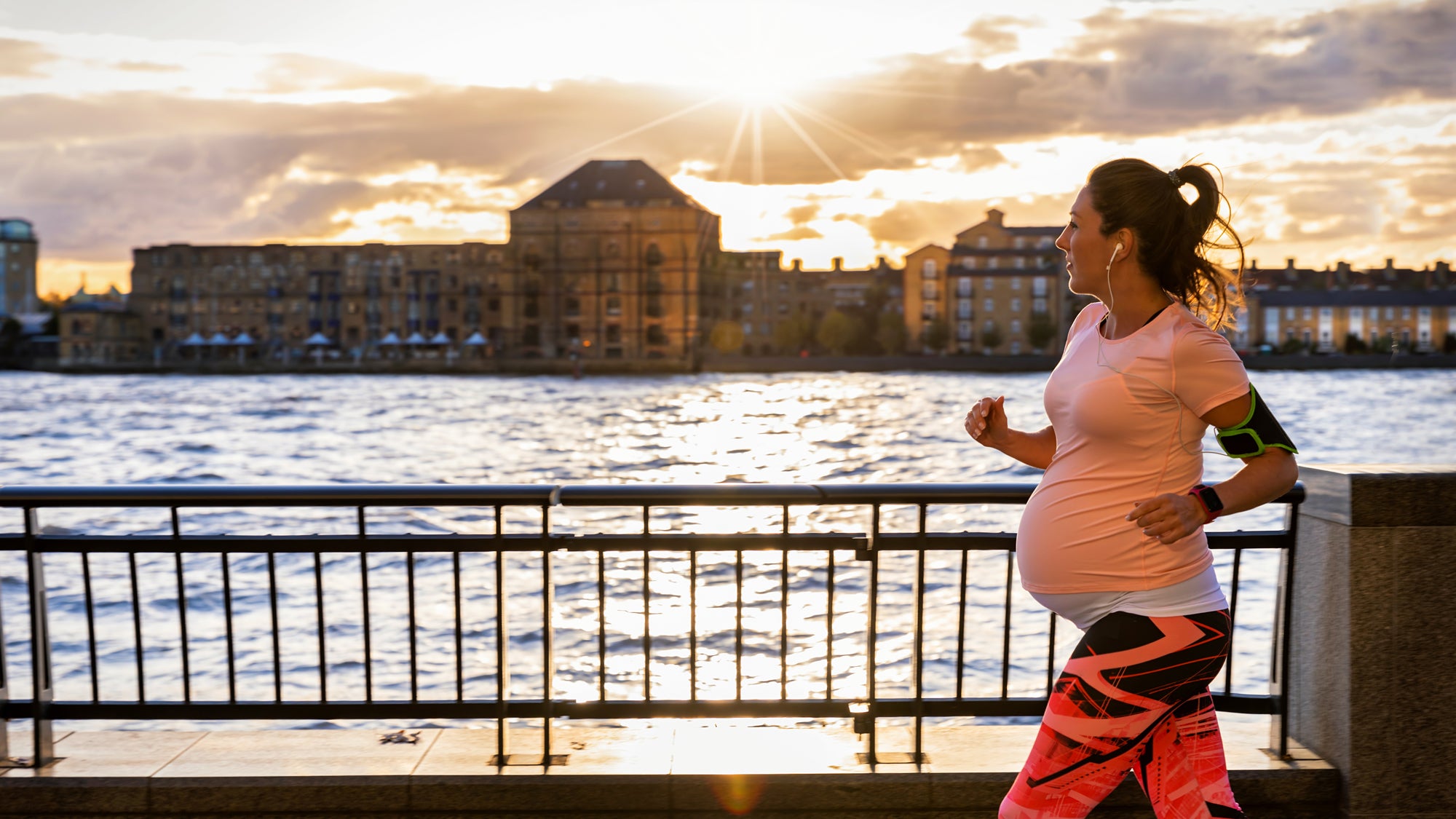Training in Pregnancy: How To Swim-Bike-Run Safely

For many years, it was thought that women should cut back on exercise and training in pregnancy – surely that vigorous activity couldn’t be good for mother or baby! But now research is showing the opposite. Exercising during pregnancy is not only safe, but beneficial.
“Regular exercise during pregnancy benefits so many maternal and fetal conditions,” says Dr. Michael Mackelvie, OB/GYN at Kelsey-Seybold Clinic in Houston. In addition to reducing the risk of gestational diabetes, preeclampsia, and cesarean delivery, women who exercise while pregnant report better levels of overall physical and psychological health. Baby benefits, too: According to research out of East Carolina University, infants whose mothers exercised during pregnancy have stronger hearts and better neuromotor skills than those whose mothers remain sedentary while pregnant.
Mackelvie says that women who are healthy and have a normal pregnancy – that is, those without pregnancy-related complications or at risk for preterm labor or preeclampsia – will usually get the all-clear from their healthcare professional to exercise in any way they find comfortable. The emphasis here, of course, is on the word “comfortable.”
“For veteran athletes, if you could tolerate the high-intensity workouts before pregnancy, it is safe and beneficial to continue them throughout pregnancy,” says Mackelvie. “But you may need to modify them to accommodate the physiological and anatomical changes that occur with pregnancy.”
Some of these changes are obvious – for example, riding a bike can become a challenge for someone with a nine-month pregnancy belly. But even the first trimester of pregnancy can pose physiological changes that may require a bit of adjustment and adaptation. Mackelvie says these don’t have to sideline you altogether, but women should pay attention to their bodies and adjust as needed.
Training in Pregnancy: First Trimester
“Early on in pregnancy, you’re most likely to struggle with symptoms like nausea, vomiting, and overall not feeling well,” says Mackelvie. In addition to making exercise a generally unpleasant experience, the nausea and vomiting that comes with morning sickness can mean the body isn’t adequately supplied with nutrition and hydration to fuel your active pursuits. Women can combat these symptoms by eating smaller meals of plain foods (such as baked potatoes) throughout the day instead of three big meals, and drinking water and fluids between meals. If the nausea is extreme and unrelenting, contact a physician immediately for treatment.
Women in the first trimester should also take care to avoid overheating. Intense heat exposure (a body temperature of more than 102 degrees Fahrenheit) during early pregnancy has been linked to an increased risk of congenital heart defects. Mackelvie recommends pregnant women wear loose-fitting clothing while exercising for better temperature management, and skip intense workouts like hot yoga. On particularly hot and humid days, exercise in the early-morning hours or take to the trainer or treadmill indoors.
Training in Pregnancy: Second Trimester
The morning sickness is gone – hallelujah! – but a new set of issues may take its place: indigestion, heartburn, and constipation. The good news is that exercise may actually help alleviate these symptoms, so hop in the pool or go for a run to see if you find relief. If you’re still feeling less-than-great, consult with your doctor for an over-the-counter medication to safely minimize symptoms.
The second trimester is also a time when the physical changes of pregnancy become evident, as a woman’s belly and breasts are rapidly growing. Though this growth isn’t cumbersome as far as the ability to swim, bike, and run, there may be some discomfort, especially if clothing does not fit the new dimensions. A properly fitted sports bra is key, as it will provide adequate support during movement as well as allow plenty of breathing room.
As you move through this trimester, you may start to notice your workouts suddenly seem harder. That’s perfectly normal – during pregnancy, your need for oxygen increases, so what once felt easy pre-pregnancy may now leave you feeling a bit winded. Adjust your training accordingly – instead of trying to maintain a certain minutes-per-mile pace, consider training by effort level instead.
Training in Pregnancy: Third Trimester
The baby bump in the front of your body shifts your center of gravity, which can throw your balance out of whack. Be aware of this while running and cycling, since it can leave you prone to falls. “Stationary bikes and aquatic exercises may be especially beneficial in this trimester, as you can exercise in a weight-supported environment with a reduced fall risk,” says Mackelvie.
Women in the third trimester may also notice lower back pain and looser joints. Pregnancy hormones relaxin and progesterone loosen the ligaments that support the joints, especially in the pelvic area. This, coupled with the biomechanical changes women make to their stride to adjust for a shifted center of gravity, can add strain to the back muscles. A belly band while running may reduce some of this discomfort, as will wearing shoes that provide good support.
Warning Signs
Though training in pregnancy is safe and encouraged, certain symptoms during exercise should be reported to an obstetrician immediately:
Dizziness or fainting
Chest pain
Calf pain or swelling
Painful contractions of the uterus
Bleeding or fluid leaking from the vagina
But Mackelvie says these exercise-induced symptoms are rare, and fear shouldn’t discourage women from being active through the full 9 months of pregnancy. “The benefits of exercise far outweigh the risks, both inside and outside of pregnancy.” As with all medical advice, be sure to work together with your physician to find the best exercise plan for you.